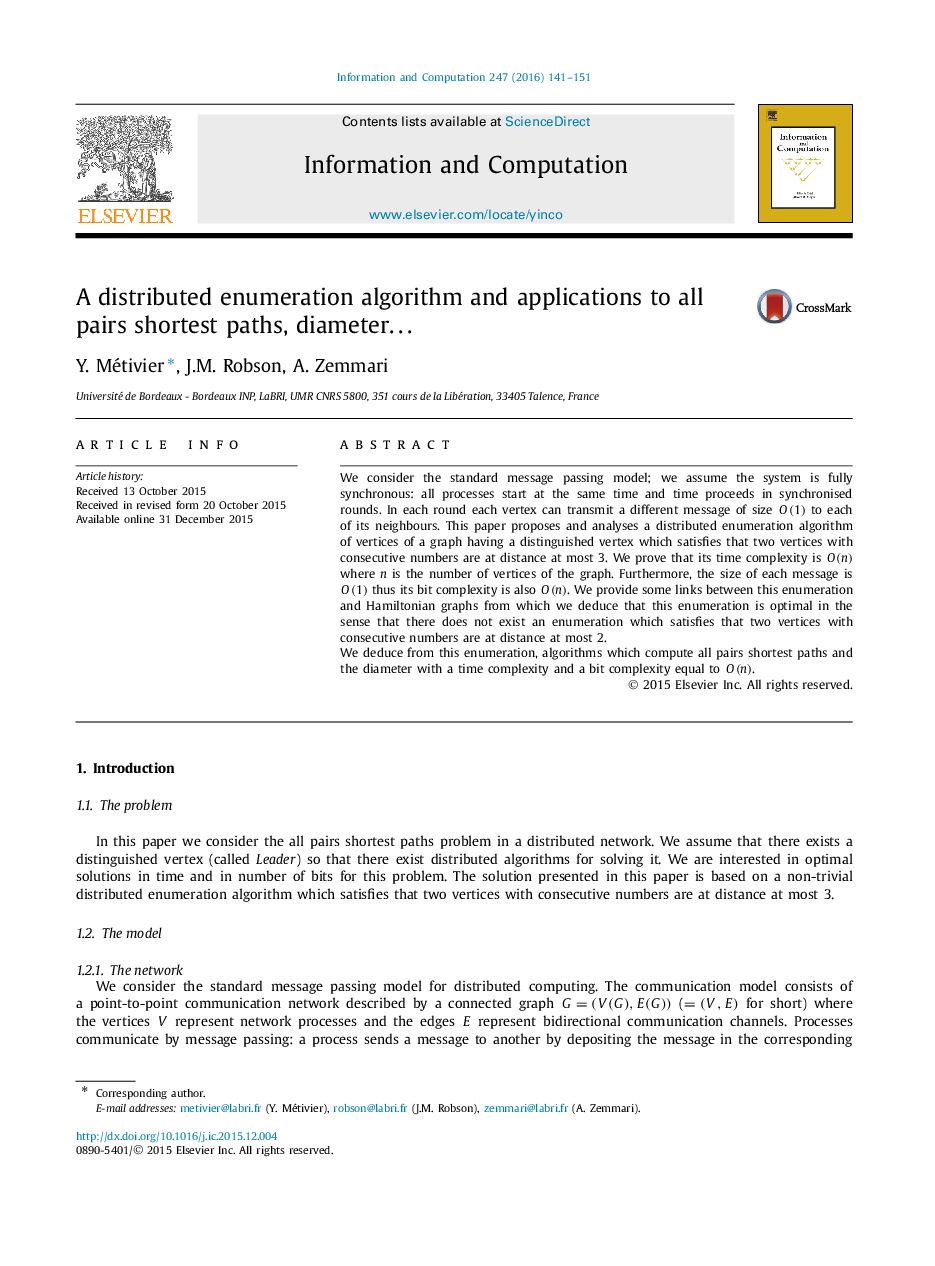| Article ID | Journal | Published Year | Pages | File Type |
|---|---|---|---|---|
| 426725 | Information and Computation | 2016 | 11 Pages |
We consider the standard message passing model; we assume the system is fully synchronous: all processes start at the same time and time proceeds in synchronised rounds. In each round each vertex can transmit a different message of size O(1)O(1) to each of its neighbours. This paper proposes and analyses a distributed enumeration algorithm of vertices of a graph having a distinguished vertex which satisfies that two vertices with consecutive numbers are at distance at most 3. We prove that its time complexity is O(n)O(n) where n is the number of vertices of the graph. Furthermore, the size of each message is O(1)O(1) thus its bit complexity is also O(n)O(n). We provide some links between this enumeration and Hamiltonian graphs from which we deduce that this enumeration is optimal in the sense that there does not exist an enumeration which satisfies that two vertices with consecutive numbers are at distance at most 2.We deduce from this enumeration, algorithms which compute all pairs shortest paths and the diameter with a time complexity and a bit complexity equal to O(n)O(n).
